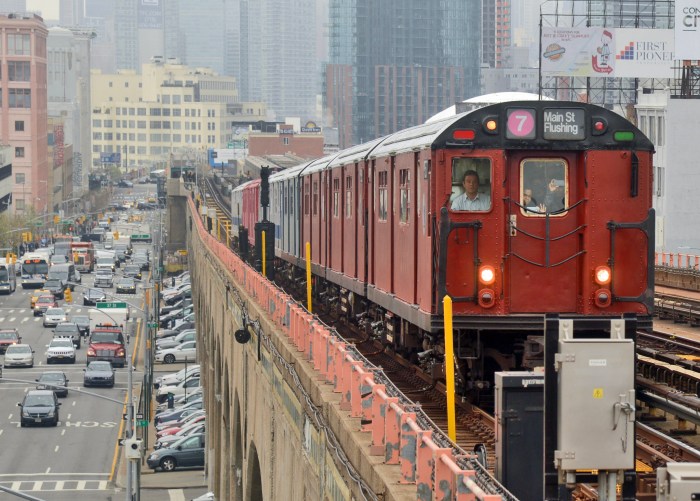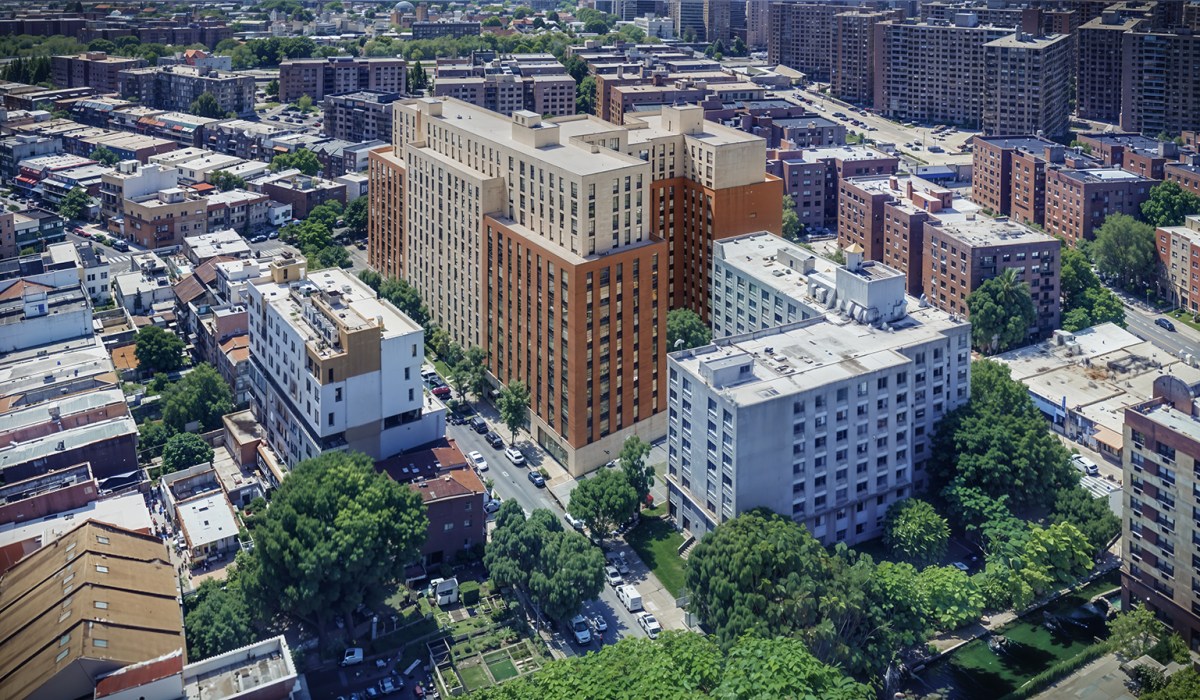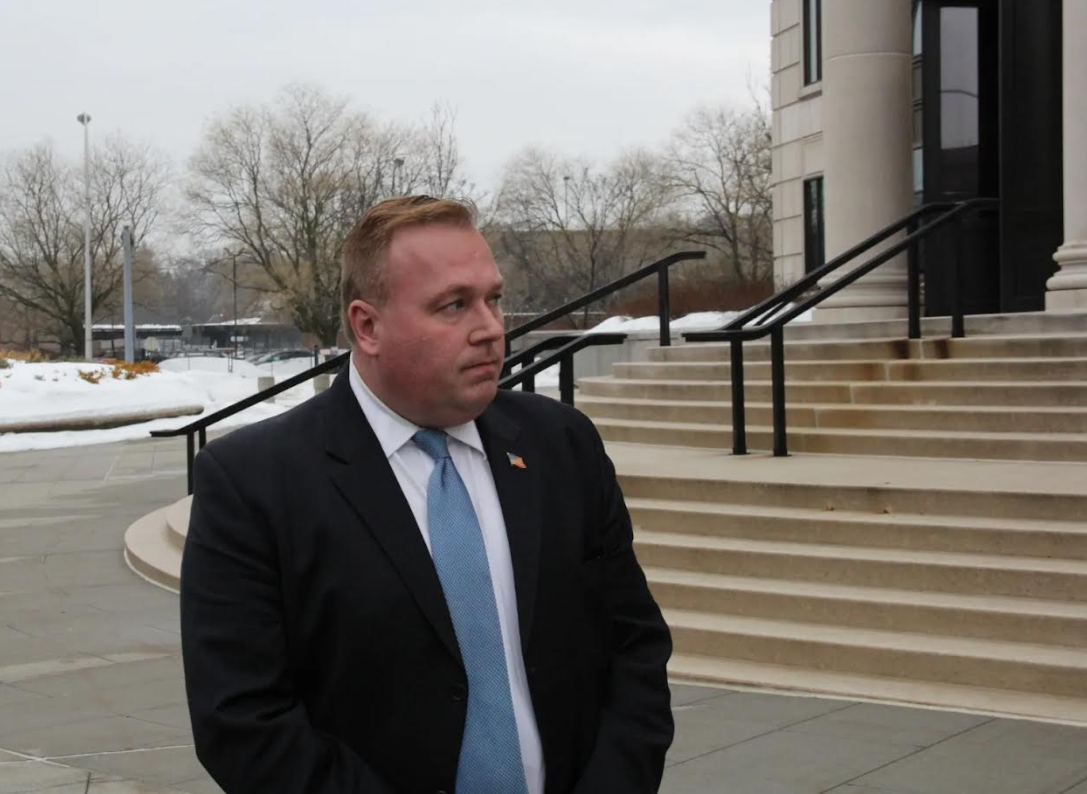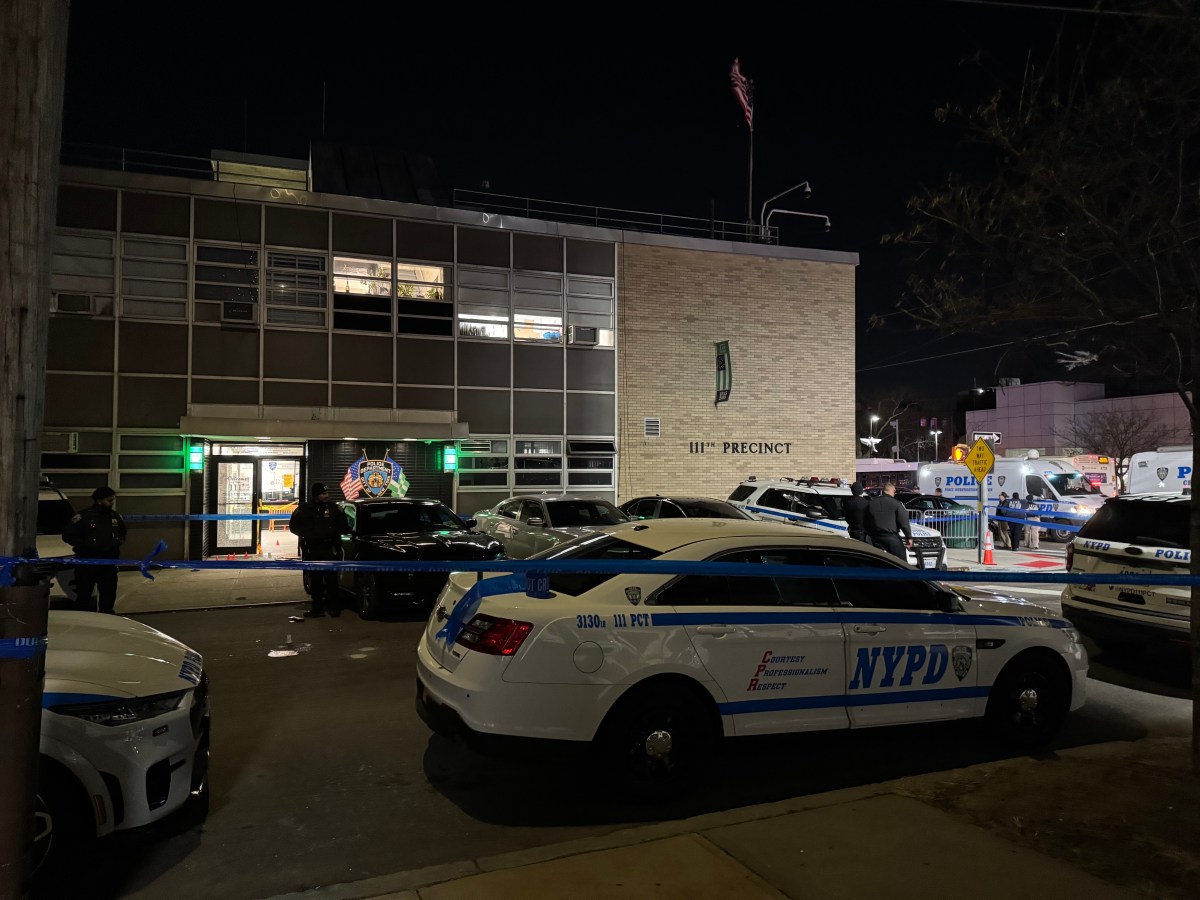A collapsed tunnel wall and leaking water may have sent the G train off the rails in Brooklyn, transit documents and union officials revealed Friday. The derailment sparked a clash between the subway workers’ union, MTA, and City Hall.
More than 80 passengers had to be evacuated Thursday night when the first car of the southbound G train derailed about 600 feet south of the Hoyt-Schermerhorn station in downtown Brooklyn. The front two wheels on the first car came off the track, an MTA spokeswoman said.
Two people were hospitalized at Brooklyn Hospital, according to documents and the FDNY. One rider suffered neck and back pain, another heat-related trauma. One injured mother traveled with her baby, who was not hurt.
“It felt like we ran over something, there was a feeling of metal on metal, it was bumpy,” said urban planner Katie Lorah, 32, of Gowanus. “I had never been a train derailment before. It was pretty clear to most people on the train what was happening. It felt like it was askew. The train went screeching to a halt. The lights dimmed briefly.”
She said riders walked to the first car, then through a tunnel to the Hoyt-Schermerhorn station.
“It was scary to walk through the tunnel, it’s dark and not meant for walking,” said Lorah. “We were all covered in soot.”
The motorman had been approaching the stop when he saw that a bench wall on the west side of the tracks was leaning towards the rail, documents show. He put the brakes into emergency, but the train hit the collapsing wall. Concrete debris then caused the car’s first axel to derail.
The train stopped about 315 feet after it struck with the bench wall and derailed. Eight other trains also made contact with the wall before it, and between 24 to 30 cars in total were damaged.
About 75 feet of the wall collapsed because it deteriorated from a water leak, and brackets used for temporary repairs had failed, documents show. The MTA’s Office of System Safety is investigating the root cause of the derailment, a statement said.
There was also a rail condition at the Hoyt-Schermhorn subway station that caused southbound delays for G train riders Thursday afternoon. An MTA spokesman said it was near the derailment site, but not where it happened.
The Transport Workers Union Local 100 blamed the derailment on the condition of the subway’s infrastructure — and ripped City Hall over the deficit in the state-run MTA’s capital plan. In July, Gov. Andrew Cuomo asked Mayor Bill de Blasio’s administration to contribute more money to to fund big projects like the Second Avenue Subway.
“If anyone is playing politics with people’s lives, it’s the mayor,” said John Samuelsen, head of the TWU Local 100, in a back and forth with City Hall that came when he said the derailment was a glimpse into the future.
“The subway system is in dire need of repairs and upgrades, and the reality is that New York City is refusing to pay its fair-share of the five-year capital plan. Transit riders and transit workers could have been seriously hurt or killed Thursday night because a concrete bench wall deteriorated to the point it caused a derailment.”
Before that statement, City Hall said Albany was using the TWU to push its message politicizing the derailment.
“It’s irresponsible to play politics with people’s lives — and the state should not be recruiting surrogates to attack the city when such serious issues are at stake,” said mayoral spokeswoman Amy Spitalnick.
“The state is responsible for the state-run MTA. The city stands ready and willing to have a comprehensive conversation on the future of this vital state authority, and we look forward to understanding where the promised state funding will come from.”
The mayor’s office added that the city only controls four seats on the MTA board, and that it provides most of the MTA’s revenue through taxes.
The MTA said its next capital program allocates almost $1 billion for repairing subway structures like bench walls– but it can’t spend any money until it is approved and the city pays its “fair share.”
“I am tired of writing letters to city officials that result only in vague calls for more conversations,” said Chairman Thomas Prendergast, who called the derailment unacceptable. “The sooner we can end these games and get to work on rebuilding our transit network, the better we can serve the 8.5 million customers who rely on the MTA every day.”
Cuomo’s office offered a one-line response to the transit union and mayor’s office. “The state has been crystal clear when it comes to its commitments to the MTA’s future,” said spokeswoman Dani Lever.
As officials clashed over the derailment, Brooklyn and Queens riders on the G line had to cope with frustrating delays on Friday.
G train service was reduced between the Bedford-Nostrand Avenue station and Court Square, and service was very limited to Fulton Street, according to the MTA.
Trains were running in both directions on the Queens-bound track only. The MTA restored service fully in the late afternoon.
Tolani Adeboye, a 38-year-old data manager from Bedford-Stuyvesant, said she had to take Citi Bike to work Friday– and that Cuomo was on the hook for the derailment.
“With the current state of the MTA, I make it a habit to check mta.info before I leave in the morning,” said Adeboye, who is a member of the Riders Alliance.
“This is a safety issue. I would love to hear what the governor has to say about it,” she said. “The governor has to be held responsible.”


































